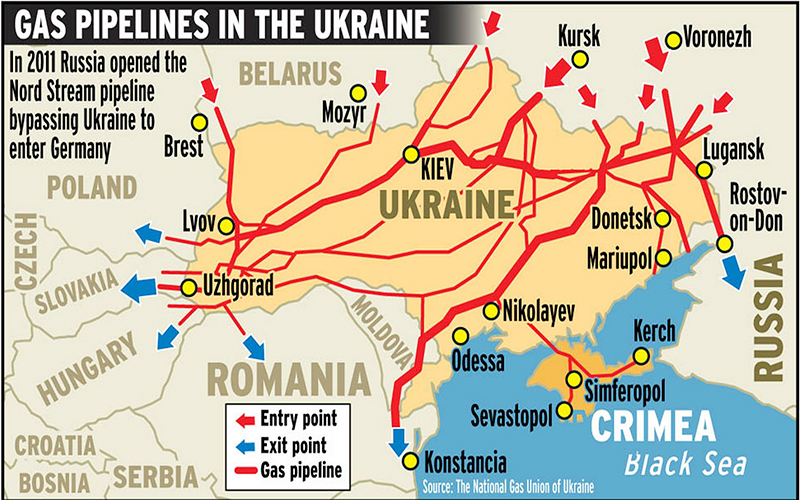Russian Gas and the Ukraine
Miguel Guaglianone

Finally, on Thursday, October 30, the European Union, the Ukraine and Russia appeared to have reached an agreement -- at least until next March -- for the supply of gas from the Russian Federation, which must cross the Ukraine to reach several central European countries, and for the Ukraine itself.
Despite immense political pressure from the United States, whose main interest is to maintain tension in the Ukraine as part of its strategy to encircle Russia, the main factor that accelerated this agreement is the imminent arrival of "Old Man Winter." Neither the Ukraine nor the EU itself are able to face it without the supply of Russian gas. Already in the Ukraine temperatures are approaching 0 degrees and despite a warm October in Europe, winter is imminent.
The situation is not at all straightforward. The geopolitical aspects have been tough obstacles in these negotiations, with the White House acting to maintain internal tensions in the Ukraine at any cost and attacking Russian influence on the country; and the near-bankrupt Ukrainian state, with its immense existing debt to Gazprom (the Russian gas company) and the possibility that it will be unable to pay for future supplies. The prices Russia will charge to supply the gas also had to be established. It has long been selling gas very cheaply to the Ukraine and was now seeking a substantial price increase.
A key concern has been to ensure that if Russia delivers gas again -- the agreement calls for advance payment of new deliveries, the outstanding debt will also be repaid. The European Union (including the German locomotive), in an all-out economic downturn, is not in a great position to supply funds to guarantee the agreement and, although the origin of the entire conflict was to integrate Ukraine into the community, their institutional ties have not been consolidated. Another factor in the negotiations is the participation of the International Monetary Fund (IMF), which has pushed for an agreement and is willing to provide part of the funding. It is with this aid and the promise that the Ukraine will pay that agreement has been reached.
Under the agreement, a lower price than Russia wanted, was established -- $378 per 1,000 m3 -- with the guarantee that it will remain in effect at least until March. The debt, ranging between $3,600 and $4,000 million, would be paid in two instalments: one immediately, in order to initiate new supplies and the other at year-end.
The whole deal, under the pressure of the situation (in the case of the EU and Ukraine, the coming winter and, in the case of Russia, the need to ensure a minimum income to Gazprom) is quite unstable according to some analysts. Ukraine's internal situation (the armed conflict continues despite the truce between Kiev and the autonomist provinces and the economic situation is pretty hopeless) does not offer very clear assurances that it will be able to comply. This and Washington's on-going pressure to further encircle Russia, are two factors that play against its success.
If this deal survives, and it is to be hoped it will, it will clearly be an important factor in reducing tensions in the Ukraine. The problem is that the situation is very complex and there are many other variables in the conflict zone that can cause changes in the overall picture at any time.
Miguel Guaglianone is a Uruguayan writer, based in Caracas. This item was originally published in Barómetro Internacional, October 30, 2014.
(TML Weekly No. 40, November 8, 2014. Translated from original Spanish by TML.)